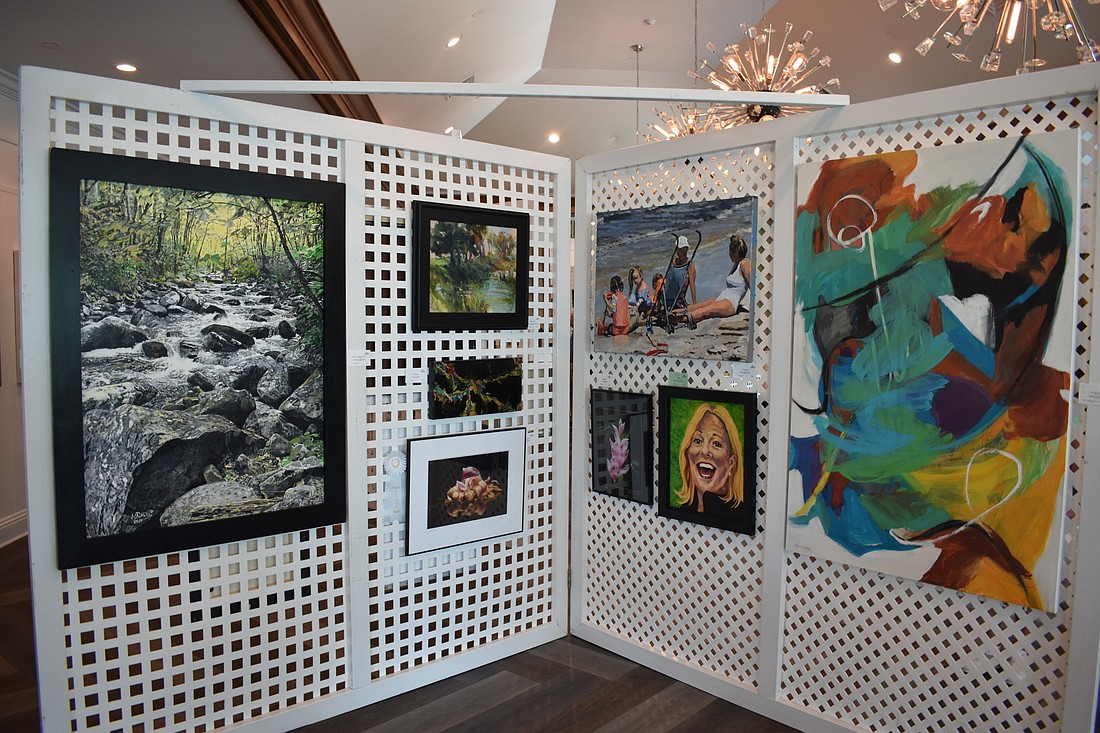- November 24, 2024
-
-
Loading

Loading

For Deborah Van Brunt, the organizer of Art in the Park, the artistic talent on display in University Park was a familiar sight.
But at this year's event, she was stunned to see the array of fine pieces residents were creating.
On display March 4-6 were items from 58 artists of University Park, and the show also accepting artwork from University Park Country Club employees.
“We've had tons of new people move into the neighborhood,” Van Brunt said. "Many of them are artists, or people who decided to give this a shot. So, we've got lots of fresh, new styles represented. It's so nice that art is something positive we can all come together to celebrate in society. That’s powerful, and I feel it is something we need so much."
She said in 2020 and 2021, the exhibits often featured darker content, such as a series of pandemic-related photographs by Joseph Wetzel, but as the community’s mood continues to evolve. She said the artwork is trending toward brighter subjects.
The works on display showcased a variety of talent and interests. Adorned with a "Best of Show" ribbon was the sumi-e ink painting "100 Old Men" by Keith Nelson. True to its name, the painting featured a gathering of precisely 100 old men going about various activities.
Sumi-e is the Japanese word for the East Asian style ink painting that originated in China and uses black ink in different concentrations, similar to calligraphy. Nelson, an American who lived in Boston for much of his life, has held a passion for sumi-e since he started painting around the time of his retirement.
Nelson started his journey across the art world. He began by painting whaling artwork inspired by the book Ahab’s Wife as he took various lessons in different mediums such as watercolor, but when he finally took up Chinese brush stroke lessons with Qing Xiong Ma in Boston, he knew he had found something that was special to him.
“It's very calming,” he said. “It's sort of like tai chi or yoga. “Controlling the brush in the ink is very critical to do these kinds of fine lines. If the if the brush is too wet, the ink is too heavy.”
He said even when the paintings don’t succeed, they can be repurposed.
“There's always a piece of it you can use," he said. "Sometimes I'll glue together the painting parts to do a collage on the canvas.”
Pointing to his signature in Chinese calligraphy — a group of three tree branches that means "I am forest" — he explained that the name was given to him by Ma, not only because its pronunciation was reminiscent of "Nelson," but Ma he saw Nelson as a deep person in the same way a forest was deep.
“Art is the most basic form of communication in mankind,” Nelson said. “There was art before there was labor. Think of the caves in the south of France, in southern Spain back thousands of years before language. People communicated by carving notches on sticks. Without art, there would be no history.”
Mingled among the art were photographs which included a dramatic cliff view, "Rock of Ages" by Ron Mason.
Mason became interested in photography while taking it as an elective during college, and began photographing his classmates at different rallies and protests.
However, instead of going into photography as a career, he served as a school psychologist, then a human resources executive, then an organizational developer for schools.
When he finally retired seven years ago and left New York, he found the photography field had changed. Instead of the black-and-white cameras he had started with shooting for newspapers, he was now working in color, and digitally.
“I just started shooting,” he said. “The composition part was easy from knowing what appeals to you and what you know resonates with people. The hard part was learning how to work the camera.”
When he was atop some oceanside cliffs at Bondi, near Sydney, Australia, that inspiration suddenly struck. Seeing some people at the bottom of the cliffs, he figured they had gotten down there, there should be a safe route back up. So he descended, climbing over slippery rocks and a rough path created by the erosion from the waves.
“And the shot that got me was completely different than what you would normally get unless you were willing to be a little bit more adventurous," he said. "It was something that was just a powerful scene. When I came down there and saw it, I said, “There it is. There's the shot.”
However, the people warned him that the rising of the tide would require him to retreat, and they started heading back up. Taken aback at having to climb up on such short notice without knowledge of the routes, he did his best to follow behind the beachgoers.
As event organizer, Van Brunt also has a few works of her own such as the colorful rainforest scene "Will We Survive?" A former public relations and marketing executive who lived in St. Petersburg for almost 30 years, she discovered art when she began taking classes after retirement, eventually reaching the point where she wanted to engage with other artists.
She said the highlight of art is “being able to express yourself. To be able to say something, even if it may not be what you thought you were saying. It's a different level of communication that is supremely rewarding."